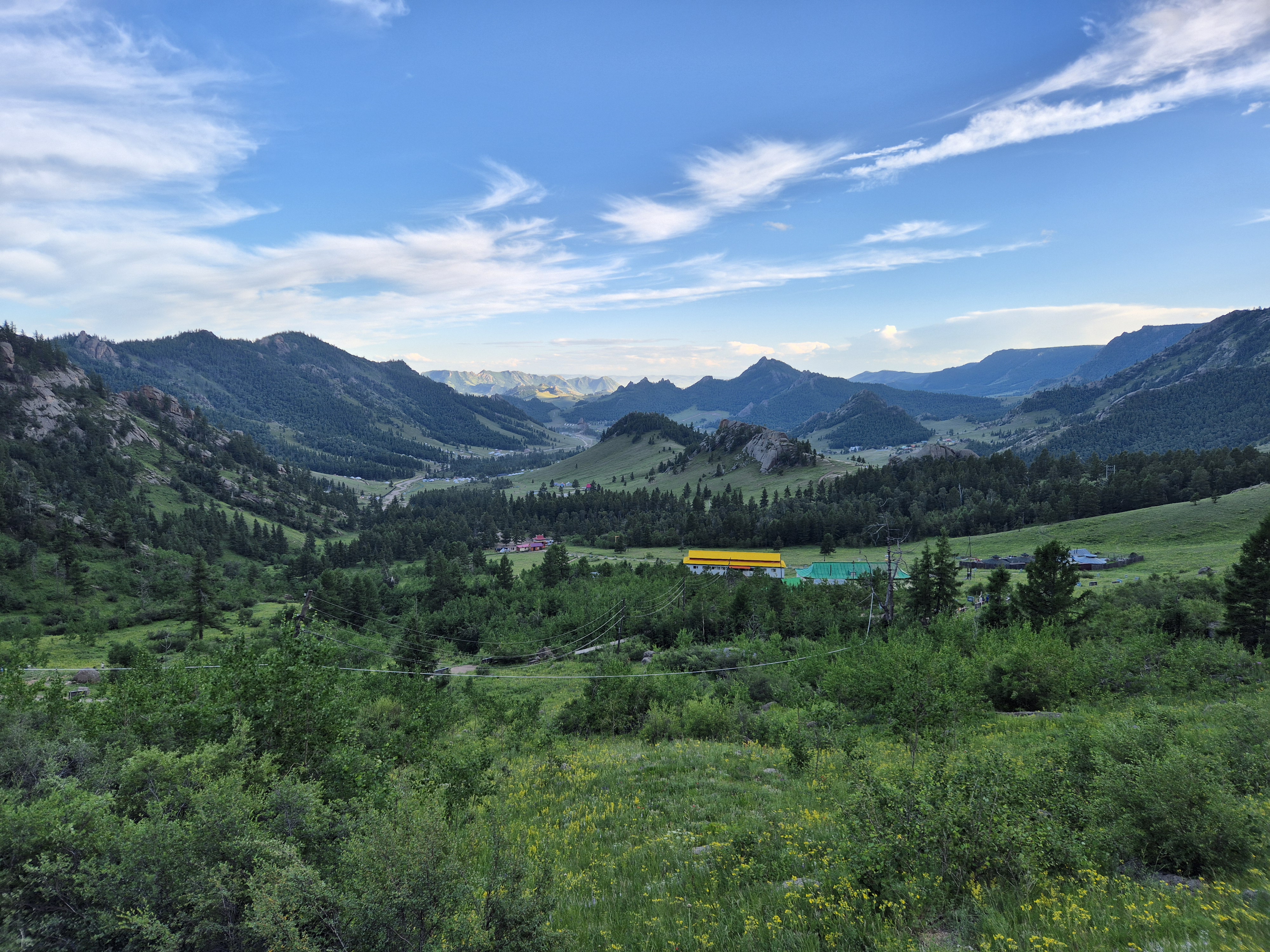Khentii Mountains on:
[Wikipedia]
[Google]
[Amazon]
The Khentii Mountains () are a
 The mountain chain overlaps the Khan Khentii Strictly Protected Area and includes Mongolia's
The mountain chain overlaps the Khan Khentii Strictly Protected Area and includes Mongolia's
mountain range
A mountain range or hill range is a series of mountains or hills arranged in a line and connected by high ground. A mountain system or mountain belt is a group of mountain ranges with similarity in form, structure, and alignment that have aris ...
in the Töv and Khentii Provinces in northeastern Mongolia
Mongolia is a landlocked country in East Asia, bordered by Russia to the north and China to the south and southeast. It covers an area of , with a population of 3.5 million, making it the world's List of countries and dependencies by po ...
.
History
The mountains were called the Langjuxu Mountains (狼居胥山) in ancient China. In 119 BC, theHan dynasty
The Han dynasty was an Dynasties of China, imperial dynasty of China (202 BC9 AD, 25–220 AD) established by Liu Bang and ruled by the House of Liu. The dynasty was preceded by the short-lived Qin dynasty (221–206 BC ...
army fought the Battle of Mobei with Xiongnu
The Xiongnu (, ) were a tribal confederation of Nomad, nomadic peoples who, according to ancient Chinese historiography, Chinese sources, inhabited the eastern Eurasian Steppe from the 3rd century BC to the late 1st century AD. Modu Chanyu, t ...
and conducted a series of rituals upon arrival at the place to glorify their victory.
Geography
 The mountain chain overlaps the Khan Khentii Strictly Protected Area and includes Mongolia's
The mountain chain overlaps the Khan Khentii Strictly Protected Area and includes Mongolia's sacred mountain
Sacred mountains are central to certain religions, and are usually the subjects of many legends. For many, the most symbolic aspect of a mountain is the peak because it is believed that it is closest to heaven or other religious realms. Many reli ...
, Burkhan Khaldun
The Burkhan Khaldun ( ) is one of the Khentii Mountains in the Khentii Province of northeastern Mongolia. The mountain or its locality is believed to be the birthplace of Genghis Khan as well as his tomb. It is also the birthplace of one of h ...
, which is associated with the origin of Genghis Khan
Genghis Khan (born Temüjin; August 1227), also known as Chinggis Khan, was the founder and first khan (title), khan of the Mongol Empire. After spending most of his life uniting the Mongols, Mongol tribes, he launched Mongol invasions and ...
. The range forms the watershed between the Arctic Ocean
The Arctic Ocean is the smallest and shallowest of the world's five oceanic divisions. It spans an area of approximately and is the coldest of the world's oceans. The International Hydrographic Organization (IHO) recognizes it as an ocean, ...
(via Lake Baikal
Lake Baikal is a rift lake and the deepest lake in the world. It is situated in southern Siberia, Russia between the Federal subjects of Russia, federal subjects of Irkutsk Oblast, Irkutsk Oblasts of Russia, Oblast to the northwest and the Repu ...
) and the Pacific Ocean
The Pacific Ocean is the largest and deepest of Earth's five Borders of the oceans, oceanic divisions. It extends from the Arctic Ocean in the north to the Southern Ocean, or, depending on the definition, to Antarctica in the south, and is ...
basins. Rivers originating in the range include the Onon, Kherlen, Menza and Tuul.
A northern extension of the Khentii Mountains forms a range of the same name which is part of the Khentei-Daur Highlands in the Transbaikalia Krai of Russia.
Genghis Khan
Genghis Khan (born Temüjin; August 1227), also known as Chinggis Khan, was the founder and first khan (title), khan of the Mongol Empire. After spending most of his life uniting the Mongols, Mongol tribes, he launched Mongol invasions and ...
, founder of the Mongol Empire
The Mongol Empire was the List of largest empires, largest contiguous empire in human history, history. Originating in present-day Mongolia in East Asia, the Mongol Empire at its height stretched from the Sea of Japan to parts of Eastern Euro ...
, is thought to have chosen a resting place in the Khentii Mountains, called the Great Taboo, or Ikh Khorig, by the Mongols
Mongols are an East Asian ethnic group native to Mongolia, China ( Inner Mongolia and other 11 autonomous territories), as well as the republics of Buryatia and Kalmykia in Russia. The Mongols are the principal member of the large family o ...
. The area is thought to be where Khan may be entombed.
References
Mountain ranges of Mongolia {{Mongolia-geo-stub